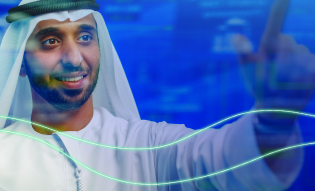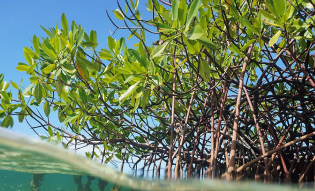Protecting Marine Habitats
The Ghasha ultra-sour gas concession comprises the Hail, Ghasha, Dalma, Nasr, Satah al Razboot (SARB), Bu Haseer, Shuweihat, and Mubarraz offshore sour gas fields in Abu Dhabi. As infrastructure was required to further develop, drill, and produce from the sour gas fields in the first phase of the Ghasha concession, ADNOC awarded the dredging, land reclamation, and marine construction contract to build multiple artificial islands to the UAE’s National Marine Dredging Company (NMDC). Valued at AED 5 billion, the project enables NMDC to construct 10 new artificial islands and two causeways, as well as expand an existing island, Al Ghaf.
The artificial islands are named after pearl diving sites in the area and capture the rich history of the region: Ghanem, Sawalem, Chananiz, Mudaifena, Reeah, Seebeh, Seemeh, Shalhah, Jzool, and Duroob.
The ambitious undertaking of building artificial islands for this project allows greater flexibility for an extended reach drilling and fewer wells, when compared to conventional offshore operations. In addition, the use of artificial islands will eliminate the need to dredge over 100 locations for wells and will provide habitats for marine life.
ADNOC has a proven record of developing artificial islands, including the construction of four artificial islands for the Upper Zakum expansion project. ADNOC’s Upper Zakum field is the second-largest offshore oil field and the fourth-largest oil field in the world.
Minimizing our Marine Footprint
The reserve is rich in coastal ecosystems such as coral reefs, seagrass beds, and mangroves. It is also home to the world’s second-largest population of dugongs, an endangered marine species that feed on seagrass and prefer to live in shallow waters.
In line with ADNOC’s ongoing commitment to protecting the biodiverse marine environment, the company worked in close partnership with the Environment Agency - Abu Dhabi (EAD) and conducted one of the largest marine Environmental Impact Assessment (EIA) studies ever undertaken in the UAE. Collectively, they integrated the findings into a robust biodiversity monitoring program that detailed how they would minimize our potential environmental footprint throughout the lifetime of the project. The program includes monitoring elements such as marine mammal and reptile observation, bird surveys, quality of marine water (both in-situ and analytical), in-fauna sediment testing, underwater noise levels, and reclamation fill.
The use of artificial islands will provide habitats to marine life by eliminating the need to dredge over 100 locations for wells. Through onshore and offshore clustering technologies, the environmental footprint of the project was minimized as they enabled the drilling of several wells from a common location.
In relation to our wider marine environment, 2.8 million mangroves have been planted across Abu Dhabi. More than 200 artificial coral reef structures have also been deployed in Makasib Island, Zirku Island and Das Island.






